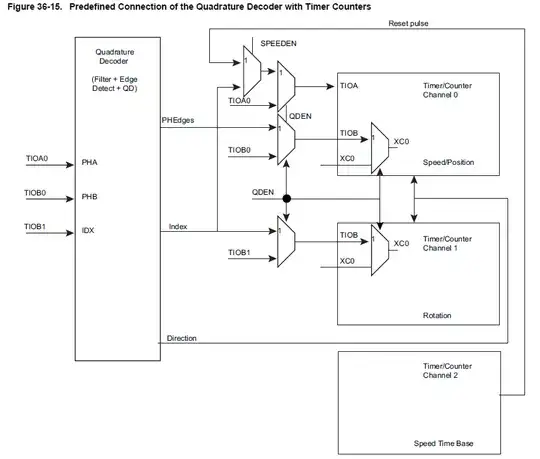I am working on an autonomous robot in my summer vacations. I am currently working on running the motors of my robot in a closed loop. In order to do so, I have to interface two Quadrature encoders of the motors with the Arduino Due that I have. My motor encoder have 3200 Edges per Revolution. I have read the Atmel SAM3x8E datasheet and have successfully tested one encoder in Arduino IDE. It appears that TIOA0 and TIOBO are used to read PHA and PHB of of one Encoder which correspond to Pin 2 and 13 of Arduino Due. I am not using Index pin (TIOB1).
It seems that I can only interface 1 quadrature .Is their any way I can use Quadrature decoder to read 2 encoders instead of one. As I have stated earlier I am not using the index pin. So, maybe there might be a way to decode to encoders using the three available pins as shown in the above diagram. I don't want to use Interrupts to do this job.
Here's is the link of SAM3x Manual: http://www.atmel.com/Images/Atmel-11057-32-bit-Cortex-M3-Microcontroller-SAM3X-SAM3A_Datasheet.pdf
Link of Motor that i am using: www.pololu.com/product/2824
